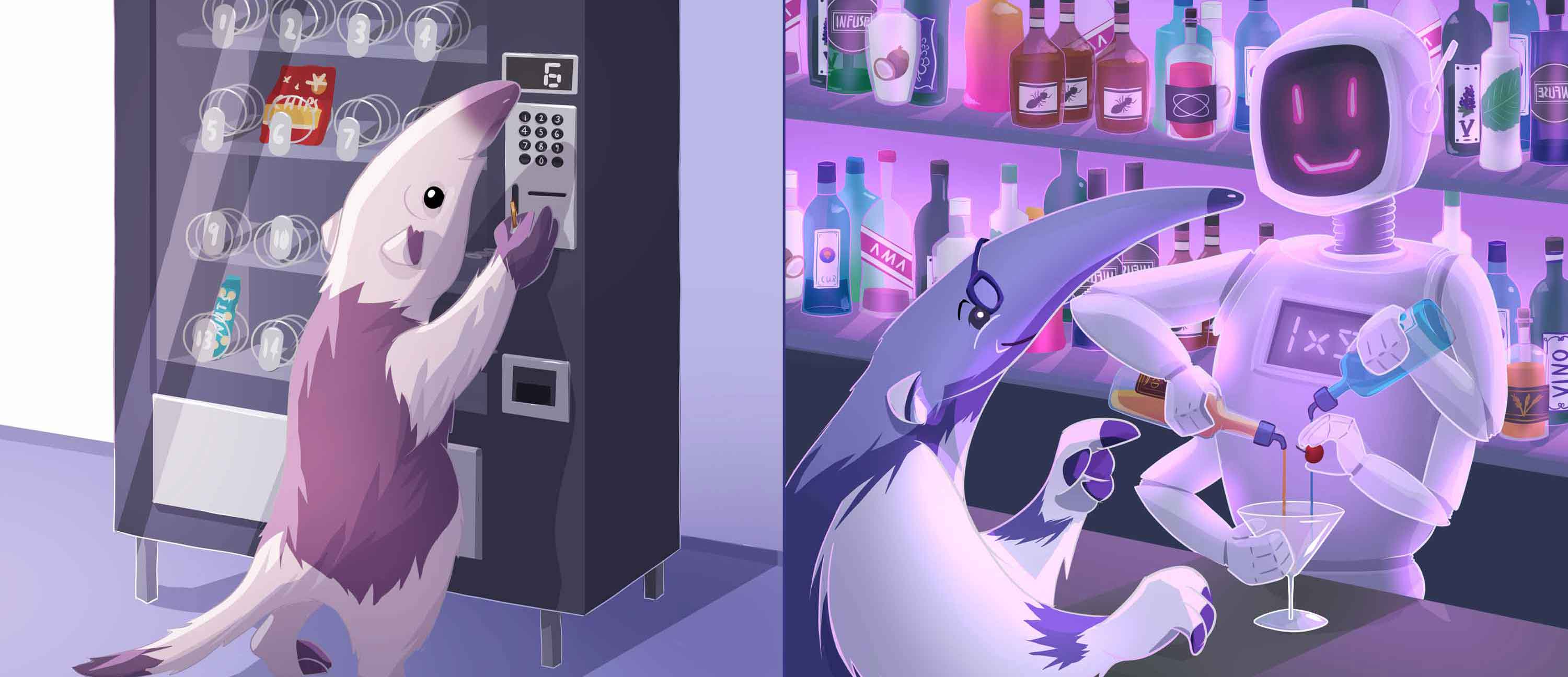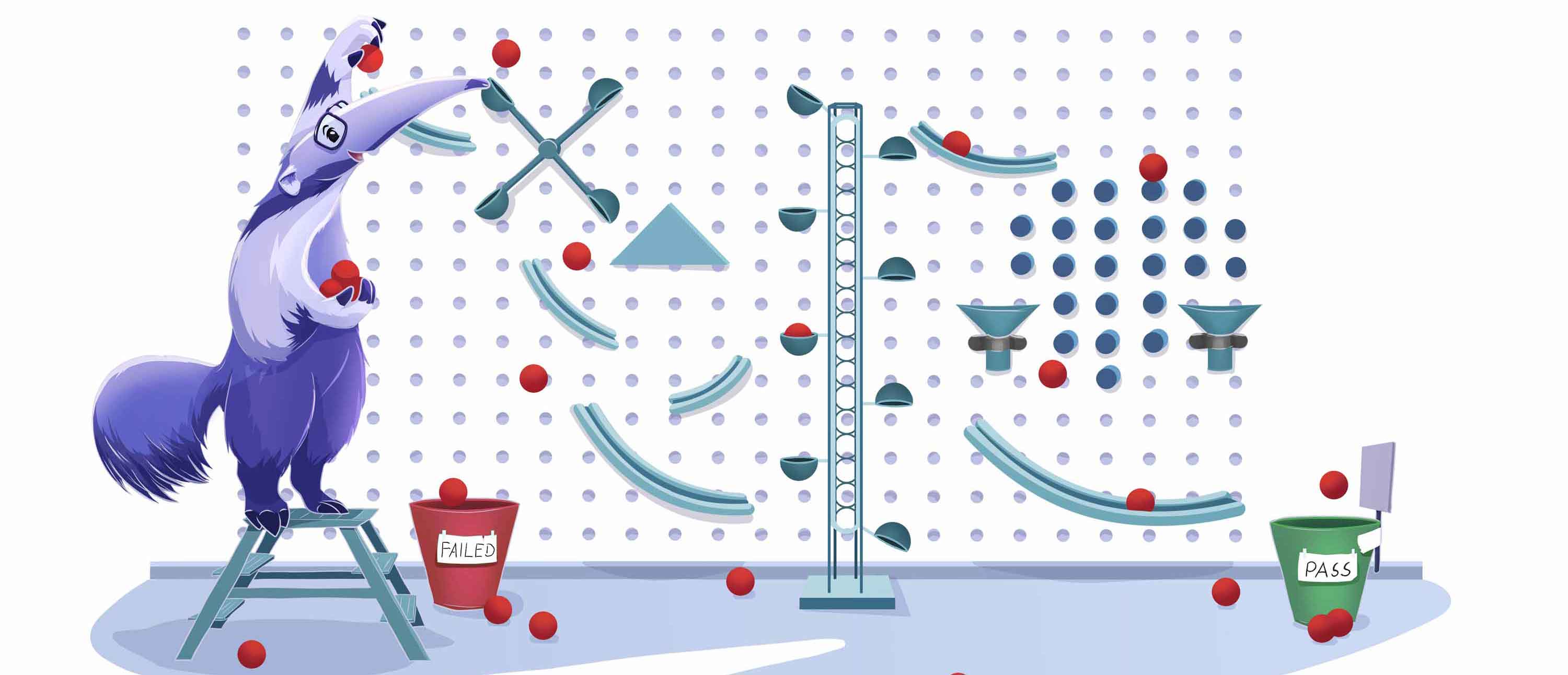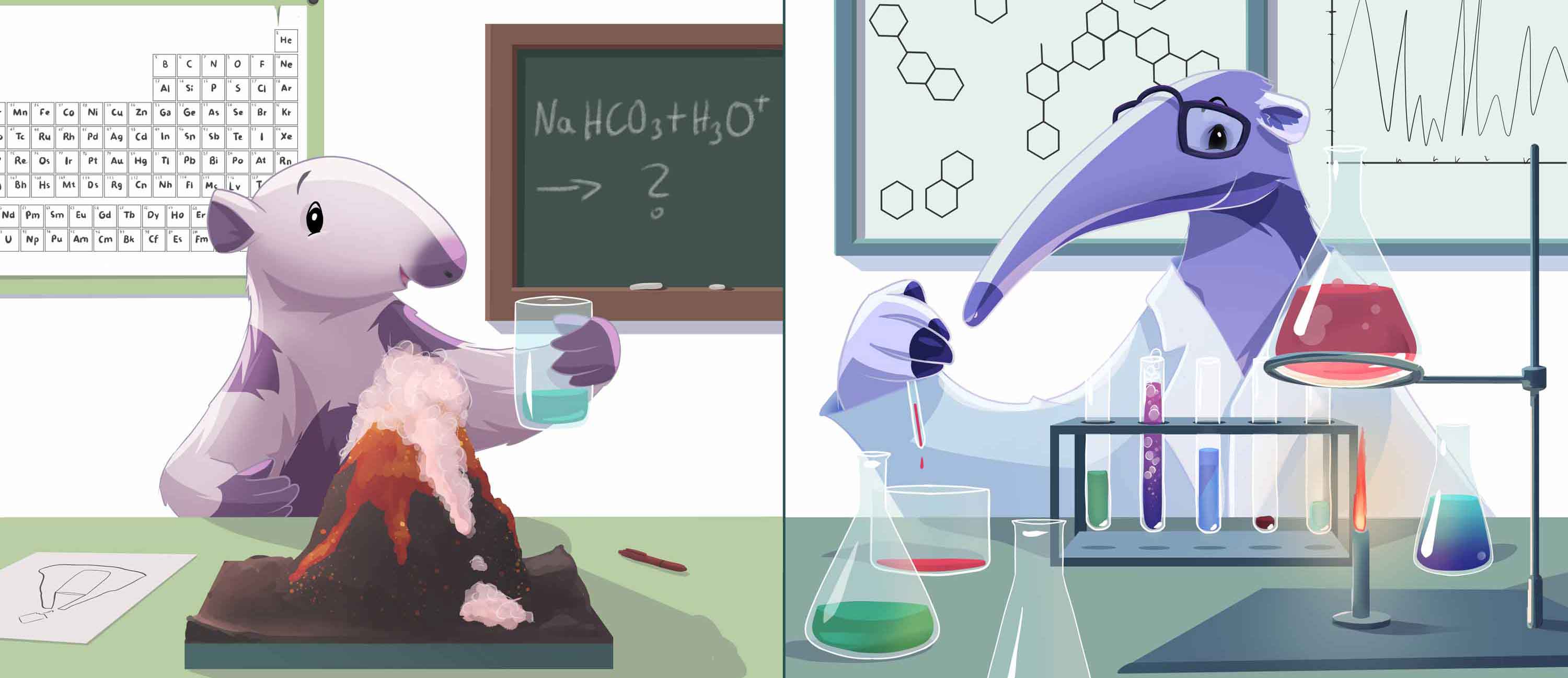How is Antithesis different?
Antithesis is a significant evolution in software testing.
It complements some existing testing approaches, while completely replacing others. Here’s how Antithesis compares with some traditional alternatives:
It complements some existing testing approaches, while completely replacing others. Here’s how Antithesis compares with some traditional alternatives:
Automated testing vs. Antithesis

"Automated" tests are manually-written tests that get run automatically on a set schedule or on demand by a developer. Each test covers a fixed set of code paths, and running it more than once on the same software doesn't provide any additional benefit. If more coverage is wanted, new tests must be written. Automated tests are frequently brittle: when the underlying software changes, the tests must be updated.
Antithesis autonomous testing explores a different set of code paths every time it's run. If more coverage is needed, simply run the tests for longer, spending more computer time instead of more human time. The tests will cover situations that were not anticipated by any developer, increasing the chance that they uncover "unknown unknowns" before they're encountered in production. Since the test assertions cover high-level properties of the system, they usually don't need to be manually updated with new versions of the software.
Unit testing vs. Antithesis

Unit tests are tests of self-contained software functionality. Unit tests run quickly and are usually reproducible and easy to debug. Unit tests do not check whether an entire system works properly together and cannot find the vast majority of bugs.
Antithesis tests your whole system under a wide variety of environmental conditions and use patterns. It resembles end-to-end testing, but with the perfect reproducibility and easy debugging of unit testing. Existing unit tests can contribute to an Antithesis workload.
End-to-end testing vs. Antithesis

End-to-end tests validate that all of the components of your system work together. However, they are frequently flaky or brittle, because low-level network and timing conditions can violate implicit assumptions built into the test. This causes developers to neglect them, which is unfortunate because they are the most powerful kind of traditional test. Moreover, this same flakiness leads developers to design end-to-end tests of the "happy" path, without network faults, retries, or other real-world complications.
Antithesis build an ever-evolving collection of end-to-end tests that are perfectly reproducible (never flaky), and always finding new conditions or situations to test. Antithesis combines the coverage of end-to-end tests, the easy debugging of unit tests, and the flexibility and power of property-based testing.
Chaos testing vs. Antithesis

Chaos testing consists of testing software systems by intentionally introducing hardware and network failures in production environments. The goal is to identify problems that may occur, and to harden the system against common failure scenarios.
Antithesis testing resembles chaos testing, in that it injects faults to trigger and identify problems. But Antithesis runs these tests in a fully deterministic simulated environment, rather than in production. This means Antithesis testing never risks real-world downtime. This in turn allows for much more aggressive fault injection, which finds more bugs, and finds them faster. Antithesis can also test new builds before they roll out to production, meaning you find the bugs before your customer does.
Finally, Antithesis can perfectly reproduce any problem it finds, enabling quick debugging. While chaos testing can discover problems in production, it is then unable to replicate them, because the real world is not deterministic.
Finally, Antithesis can perfectly reproduce any problem it finds, enabling quick debugging. While chaos testing can discover problems in production, it is then unable to replicate them, because the real world is not deterministic.
Fuzzing vs. Antithesis

Fuzzing consists of sending random inputs into a software system in order to trigger undesirable behavior. Guided fuzzing implicitly assumes that the software-under-test is deterministic or close to deterministic. This means that fuzzing is very difficult to apply to concurrent, stateful, or interactive systems. Fuzzing is generally only practical for self-contained libraries and processes, making it useful for testing simple programs for security vulnerabilities, but limiting its applicability to the real world.
Antithesis is uniquely able to use fuzzing-like techniques to test complex distributed or interactive systems. This is possible because Antithesis can force any collection of software to act like a deterministic pure function. This means that autonomous testing techniques, including those used by conventional fuzzers, can be applied to many more systems.
Property-based testing vs. Antithesis

Property-based testing (PBT) uses random inputs to check individual data structures, procedures, or occasionally whole programs for high-level invariants or properties. Property-based testing has much in common with fuzzing—the main differences are heritage (PBT comes from the functional programming world, while fuzzing comes from the security/systems programming world) and focus (program functionality vs. security issues). Like fuzzing, PBT is generally only applicable to self-contained libraries and processes.
Antithesis is analogous to applying PBT to an entire interacting software system—including systems that are concurrent, stateful, and interactive. Antithesis can randomly vary the inputs to a software program, and also the environment within which it runs. Like a PBT system, Antithesis is designed to check high-level properties and invariants of the system under test, but it can do so with many more types of software.